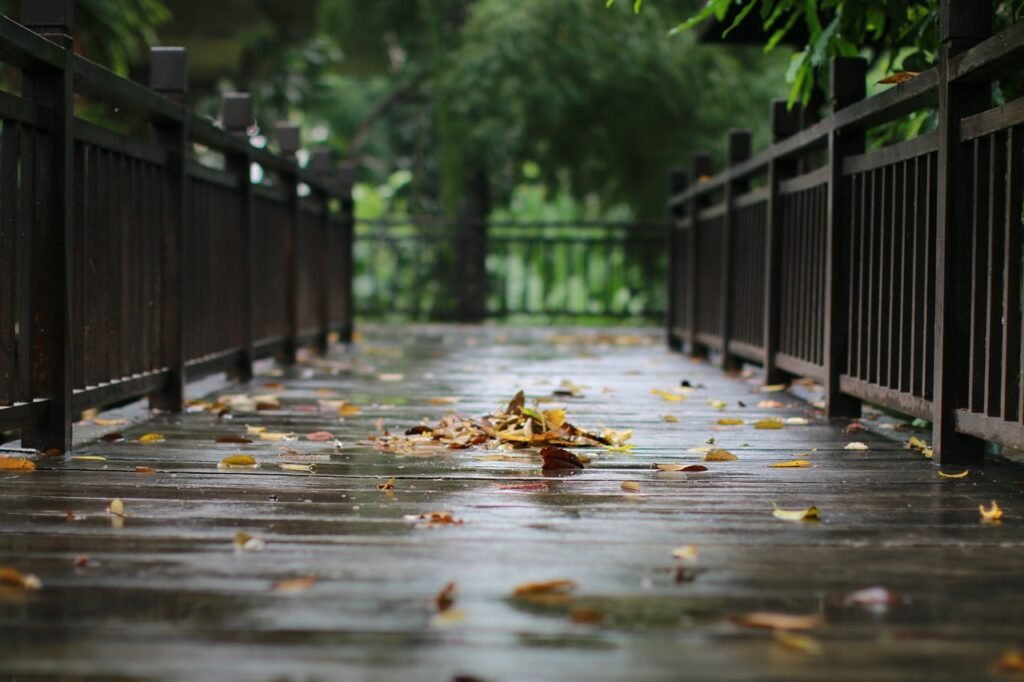
Intro
When people think of London, they often conjure up images of iconic landmarks such as Big Ben, the London Eye, and Buckingham Palace.
However, beyond the tourist attractions lies a city with a complex and diverse landscape, including neighborhoods that have garnered a reputation as “London ghettos.”
In this article, we will delve into the reality of living in these areas, debunking myths and shedding light on the truth behind London’s so-called ghettos.
Understanding the London Ghettos

The phrase “London ghettos” tends to evoke images of areas steeped in poverty and crime, with a narrative dominated by discussions around the London murder rate and neighborhoods bearing the burden of top 50 ghetto names.
Situated primarily in the outskirts, these suburbs of London are marked by socio-economic challenges, contributing to their daunting reputation.
Despite the grim picture often painted, it’s critical to delve deeper into the fabric of these communities to grasp their true essence.
Contrary to popular belief, these areas are not monolithic entities defined solely by adversity. They are vibrant communities with their own unique cultures, stories, and resilience.
The label of “ghetto” fails to encapsulate the dynamic nature of these neighborhoods, where local businesses thrive, cultural expressions flourish, and residents form tight-knit support networks.
It’s essential to recognize the diversity and strengths of these areas, rather than reducing them to mere statistics or sensational headlines about the London murder rate or the perceived dangers of South London.
Furthermore, the term “ghetto” does not accurately reflect the ongoing efforts by both community leaders and residents to overcome social and economic hurdles.
Initiatives aimed at improving education, housing, and employment opportunities are gradually transforming these areas, fostering a sense of hope and progress.
Engaging with the communities and understanding their challenges and aspirations can provide a more nuanced perspective, challenging the stereotypes associated with the term “London ghettos.”
As such, the narrative around these neighborhoods requires a shift towards a more balanced and comprehensive view, acknowledging both the struggles and the strides made towards improvement.
By doing so, we can foster a deeper understanding and appreciation of the diverse tapestry that makes up the suburbs of London, moving beyond the stigma attached to the so-called “London ghettos.”
Is London Dangerous? Debunking Myths

The perception that London as a whole is fraught with danger is a myth that demands to be debunked. While media reports often sensationalize incidents of crime, leading to heightened fears about safety, the reality is that London, like any major metropolis, has areas of both high and low crime rates.
It’s crucial for both tourists and potential residents to understand that the city’s safety can vary significantly from one borough to another.
Is South London dangerous? This is a question that often arises in discussions about safety in the capital.
While certain parts of South London have historically had higher crime rates, it’s misleading to paint the entire region with the same brush.
Many neighborhoods in South London are vibrant, bustling, and safe, enjoying strong community ties and an array of cultural attractions.
Its a reminder that blanket statements about large areas can be both inaccurate and unjust.The term “danger zone case knives” may evoke a sense of high risk, but it’s important to remember that actual danger zones in London are relatively few and can often be navigated safely with common sense measures such as avoiding poorly lit areas late at night and staying aware of one’s surroundings.
Comparatively, discussions about the “London murder rate” can cause alarm; however, when placed in context, London’s crime rates are lower than those of many other major cities around the world.
This fact underscores the importance of nuanced perspectives when considering the city’s safety.Engaging with local knowledge is key.
Residents and recent visitors can offer up-to-date insights into which areas are experiencing a renaissance of safety and community spirit, challenging outdated stereotypes.
By doing so, individuals can discover the multifaceted nature of London, appreciating its diversity and vibrancy while staying informed and cautious about genuine areas of concern.
Where to Live in London for Safety and Comfort

Choosing a neighborhood in London that aligns with your priorities for safety and comfort requires a bit of research but can yield rewarding results.
Areas such as Richmond, Greenwich, and Hampstead are often celebrated for their low crime rates, scenic beauty, and strong community atmosphere.
Richmond, known for its expansive parks and riverside views, offers a tranquil retreat from the bustling city center. Greenwich brings a mix of maritime history and modern conveniences, coupled with a friendly, village feel.
Hampstead, with its charming streets, extensive heath, and a wealth of cultural sites, provides a picturesque setting that doesn’t skimp on urban comforts.
Beyond these well-known locales, emerging neighborhoods like Clapham and Balham are drawing in families and young professionals with their vibrant nightlife, excellent transport links, and array of dining options.
These areas have seen significant investment in safety and community development, making them increasingly attractive for those looking for a balance between urban living and community spirit.
It’s also worth exploring the regeneration areas around East London, including Stratford and Canary Wharf. These parts of the city have undergone considerable transformation, now offering high-quality housing, modern amenities, and enhanced security measures. They represent the changing face of London, where innovation meets tradition, and safety is a top priority.
Engaging with community forums and local police reports can provide additional insights into the safety and ambiance of different London neighborhoods.
Visiting potential areas at various times of the day can also give you a feel for the local atmosphere and help you decide where you can envision making your London home. By considering these factors, you can find a London neighborhood that offers both safety and comfort, tailored to your lifestyle.
The Worst in London: When to Avoid Visiting

Navigating the bustling streets of London can be an exhilarating experience, yet there are periods throughout the year when tourists might consider timing their visit carefully.
The city’s dynamic atmosphere shifts during major events, such as New Year’s Eve fireworks or the Notting Hill Carnival, attracting massive crowds and, unfortunately, leading to sporadic increases in petty crimes like pickpocketing.
While these events showcase the city’s vibrant culture, they can also overwhelm first-time visitors with their sheer scale and intensity.
Similarly, the holiday shopping season, particularly around Oxford Street and Regent Street, sees a significant uptick in foot traffic.
This not only makes navigating these shopping havens more challenging but can also heighten the risk of encountering crowded situations where personal safety and belongings might be more at risk.
Another time to possibly reconsider your travel plans is during extreme weather conditions. Though London is not known for severe weather, the city can experience occasional heatwaves or snowstorms that disrupt public transportation and lead to closures of attractions, which could affect your travel experience.
Lastly, August, being the peak of tourist season, means higher prices and longer queues at major attractions. While the city thrives with a lively, tourist-friendly atmosphere, the congestion and inflated costs might detract from the overall enjoyment of your visit.
By planning around these times, visitors can enjoy a more relaxed, enriching experience of London, allowing them to explore its beauty and charm without the drawbacks of overcrowding, elevated crime rates, or inclement weather disruptions.
Is London a Good Place to Live Despite Its Reputation?

The image of London painted by tales of “ghettos” and heightened crime rates can be misleading for those contemplating making the city their home.
Looking beyond the headlines, London presents a kaleidoscope of opportunities, amenities, and communities that contribute to its status as one of the world’s most desirable living locations.
The question of safety, often highlighted by concerns over areas labeled as dangerous or discussions surrounding the London murder rate, is nuanced.
It’s essential to recognize that, like any major global city, London’s safety landscape is varied and complex.
Living in London offers unparalleled access to a rich tapestry of cultural experiences, from its world-renowned museums, galleries, and theaters to a culinary scene that rivals any city for its diversity and quality.
The city’s green spaces, such as Hyde Park, Hampstead Heath, and Richmond Park, offer residents an escape into nature, contradicting the urban sprawl one might expect.
Moreover, London’s education system, including several globally acclaimed universities and schools, adds to its appeal for families and individuals seeking top-tier educational opportunities.
The city’s robust public transportation network also makes navigating the metropolis and its plethora of attractions, workplaces, and educational institutions both convenient and efficient.
The essence of living in London lies in its ability to cater to a myriad of lifestyles, preferences, and ambitions. While acknowledging areas of improvement, particularly concerning safety and affordability, the overarching narrative remains positive.
The city’s vibrancy, resilience, and capacity for renewal and growth underscore its allure, inviting individuals from around the globe to find their niche within its dynamic bounds.
Thus, when the layers of misconception are peeled back, London reveals itself as a city not just viable for habitation but thriving with potential for those willing to explore its depth.
SkyScanner: Your Budget-Friendly Gateway to London

For those dreaming of exploring the bustling streets and historical landmarks of London without breaking the bank, SkyScanner emerges as a beacon of hope.
This flight booking platform distinguishes itself through its commitment to helping travelers secure the most cost-effective travel options. Its comprehensive search engine scours through hundreds of airlines and travel sites, bringing you deals that often remain hidden on other platforms.
What sets SkyScanner apart is not just its ability to find low-cost flights; it’s the platform’s intuitive features such as price alerts, which notify you when the cost of your desired flight drops, and the “cheapest month” tool, which advises on the most budget-friendly times to travel to London.
These features are especially useful for visitors looking to experience London’s charm while navigating the financial constraints of international travel.
Additionally, SkyScanner’s flexibility search options allow you to compare prices across different days and even months, ensuring that you book your flight at the absolute best rate possible.
This commitment to affordability, combined with a user experience designed for ease and efficiency, solidifies SkyScanner’s position as a recommended choice for budget-conscious travelers.
It’s more than just a booking site; it’s your gateway to London, offering a seamless start to what promises to be an unforgettable journey.
Final Thoughts on London’s Safety

Navigating the narrative surrounding London’s safety requires a nuanced understanding that goes beyond sensational headlines.
The city, while facing its share of challenges, embodies a resilience and diversity that contributes to its overall security and appeal.
Concerns related to specific “ghetto” areas or the broader notion of danger must be contextualized within the city’s vast and varied landscape.
It’s essential to engage with updated, localized knowledge, which often reveals a reality far removed from outdated or exaggerated perceptions of risk.
London’s dynamic nature means that safety conditions in any given area can evolve, with many neighborhoods witnessing significant improvements in community cohesion and crime prevention initiatives.
Tourists and residents alike are encouraged to approach the city with an open mind, leveraging resources like community forums, local police reports, and firsthand accounts to gain a contemporary understanding of safety across different boroughs.
With informed precautions and an awareness of one’s surroundings, the experiences and opportunities London offers far outweigh the concerns that might deter someone from exploring or settling in this iconic city.
Embracing the diversity, history, and cultural richness of London while remaining vigilant is key to enjoying all that this world-class metropolis has to offer.
Remember, London’s story is not just one of caution but also of progress, community, and enduring charm, making it a place worthy of exploration and admiration.